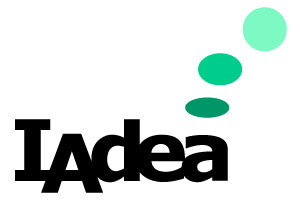… and not holding out for the utopian solution to net zero.

What role do facilities managers play in all this? As stewards of the workplace, they too have a role to play in laying out actionable steps in aiding their organizations reduce carbon and ultimately achieve net zero.
Building Utopia
In a carbon-free utopian future, the building in which our workplaces reside would be clad entirely solar panels, 100% efficient wind turbines dominate the roof, and disposable plastics are a thing of the past.
In the meantime, we ought to consider what’s actually possible. It’s better to focus in on initiatives that can be rolled out with ease, are without excessive red tape, and are likely have positive results. Potential areas that can be identified for improvement could include:
- Building strategic alliances with other climate-conscious stakeholders
- Cutting back on underutilized space
- Adopting promising and sustainable technologies early
Building Alliances
There are certainly those with grander ambitions too though. The bigger a goal an FM sets themself and their organization, the more stakeholders they will need to get to sign off on it. Fortunately, with climate change becoming an increasingly pressing issue that needs to be addressed, paired with organizations realizing the business case in attracting talent and customers through climate-conscious credentials, the barriers are dropping.
The Telegraph recently posed the question: Should you hire a head of sustainability? The answer is that it depends, of course. But if a business wants to move beyond simple box-ticking sustainability initiatives, it needs to considered whether there should be people within the organization forming a sustainability taskforce with someone in a leadership role at the helm. This type of leadership can better form a cohesive strategy and push sustainability up the agenda to the level of other organizational core focuses.
Facilities managers would do well to form strong bonds with — or even consider cross-functional roles — these new taskforces to create concrete alliances and improve the execution of sustainability initiatives. These new tasks forces may even have budgets of their own. This offers an opportunity for several departments to unite their budgets in achieving grander goals.
Measuring and Evaluating to Set Goals
First and foremost, get a lay of the land. Get to know the energy consumption, how it fluctuates, and how people are interacting with them. These aspects assessed alongside other metrics help drive a clearer picture of facilities and highlight opportunities ripe for improvement.
Secondly, define measurable long-term and short-term goals, and make sure there are adequate tools in place for measuring progress. These tools can also potentially reveal other avenues for improvement, and ensure short-term milestones are met on the journey to the longer-term ones.
Jettisoning Space Wastage
One of the keys to sustainability is using office space efficiently, particularly since it accounts for the second highest operational cost for businesses. Not only are costs higher, more utilities are of course necessary to supply the space too. Resource scheduling can be increasingly effective when understanding usage. Data regarding bookings can be used alongside that of other systems to identify inefficiencies and space wastage. It also allows employees to manage and book space based on their needs, creating a collaborative and flexible workspace that’s better utilized. Utilization reports give FMs a better understanding of how workspace is being interacted with, informing more areas for potential reductions.
Keeping A Finger on The Pulse of Emerging Technologies
Disruptive times drive disruptive technologies. The silver lining of the pandemic was the massive leaps made in workplace technologies that enable safer, more resilient, and more sustainable workplaces. One of these newer technologies — and which is still in continued development now — is electronic paper displays. While making its debut primarily in e-readers, it has made the successful leap into the enterprise space.
While this technology has some limitations, it truly excels in the field of sustainability, boasting itself as being 99% more energy efficient than LCD or LED displays. With many advances over recent years, including adding touch-screen capabilities, improvement to limited color displays, and finally full-color displays, it’s a technology to keep an eye on.
Final Words
We previously mentioned a carbon-free Utopia. The utopian solution is not something that will suddenly appear, so don’t hold out for it! It’s a long journey to net zero, and with carbon reporting likely to become an obligation, we all need to start taking steps towards it today.

